Small daisies

Chamomile is a flowering annual or perennial plant belonging to the Aster family and the Matricaria genus, which includes more than two dozen varieties of grasses and other plants that begin to bloom in the first year of life. Wild small daisies are especially popular in the landscape, the features of which should be considered in more detail in the article.
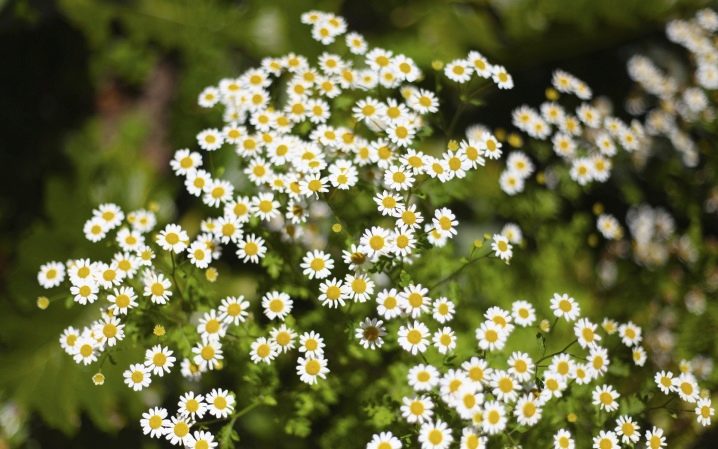
Small-flowered types of matrix
Garden chamomile is a plant grown as an ornamental crop. Small-flowered varieties are especially popular, which look good both in a group and in the form of single plantings. Such daisies will go well with:
- cornflower;
- a bell;
- poppy seeds.
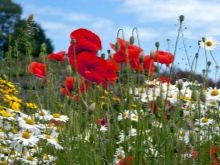
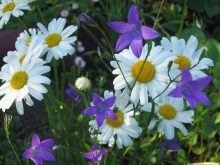
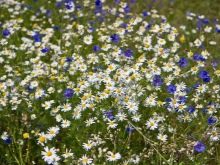
The peculiarity of small-flowered daisies is their low height. On average, such plants grow in length up to 50-70 cm. Other characteristics include:
- pinnately dissected leaf plates;
- inflorescences collected in baskets and having a yellow core and white petals at the edges;
- rod-like root system of small branching.
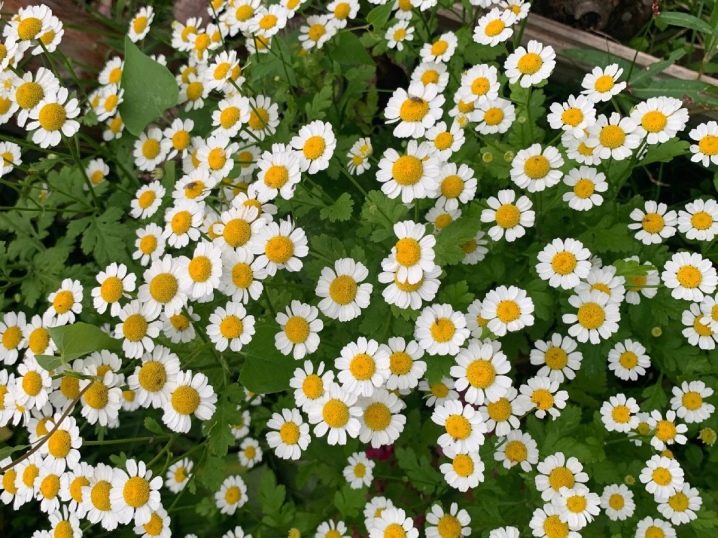
Interestingly, after flowering, small daisies form fruits in the form of small elongated achenes. Gardeners pay special attention to the pollination process, in which the anthers that open from the inside receive the pollen that enters the tube formed from the intergrown pollen sacs.
Common types of matrix are as follows.
- Medicinal chamomile - a typical view, in demand among gardeners and landscape designers. The height of the stem reaches 40 cm, the leaf plates are distinguished by the sedentary type and the pinnately dissected form, have pointed tips. The plant forms small baskets with yellow-white flowers.

- Chamomile Chikhachev - an abundantly flowering plant up to 30 cm high. Baskets are formed singly on a peduncle devoid of leaves. Such flowers look good in rock gardens or in stone compositions.
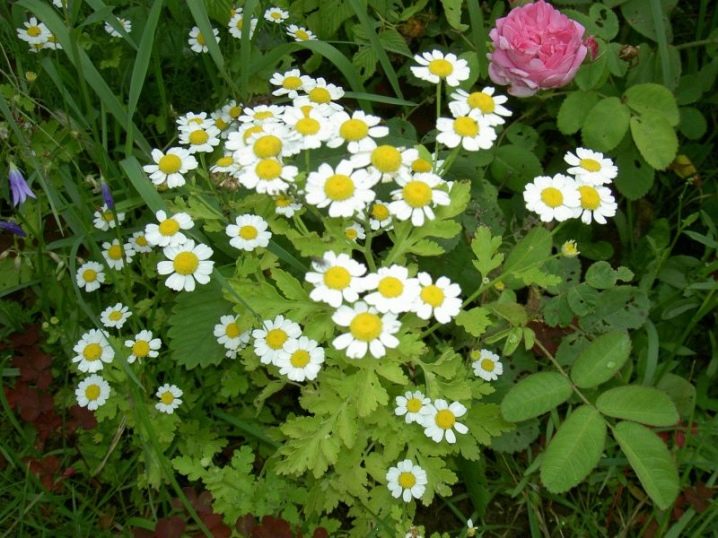
- Fragrant chamomile - a flower from North America with characteristic bright buds and a stem height up to 30 cm. The leaf plates are pinnately divided (twice), with sharp lobules. Chamomile is used both for garden decoration and for medicinal purposes.
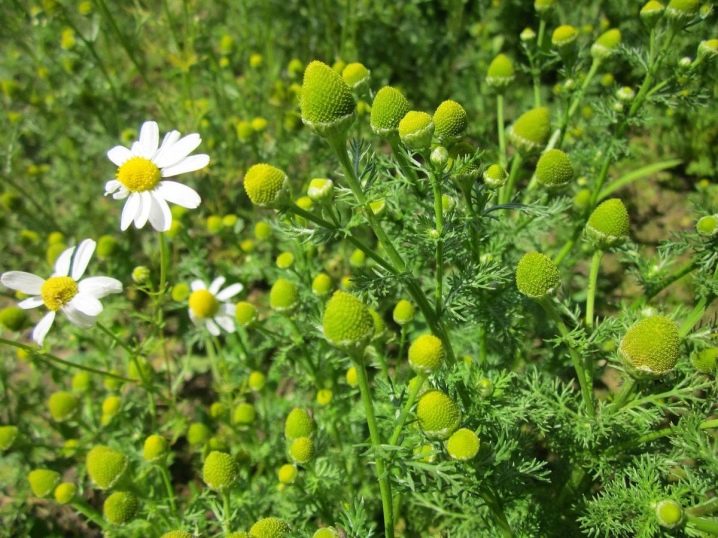
Chamomile cannot be classified as primroses, since its flowering begins later than most common crops. The usual flowering period is one season, from late spring to late summer.
In warmer regions, chamomile can bloom until mid-October.
Plants with small flowers, similar to chamomile
Chamomile is a great garden decoration option and is often confused with other small-flowered plants. With the help of a variety of flowers of low height, you can decorate the site and make it as attractive as possible. There are several types of flowers that resemble chamomile, but have their own characteristics.
Among the most common are the following plants.
- Anacyclus. Very much like a bush chamomile with its small inflorescences and white petals. There are many annual and perennial species of this plant that are popular with both gardeners and landscape designers. The advantage of culture is that it takes root quickly even in harsh conditions.

- Kosmeya. It is a delicate flower with bright buds, which gardeners like for its unpretentious care. The herbaceous annual does not require regular watering or constant fertilization.
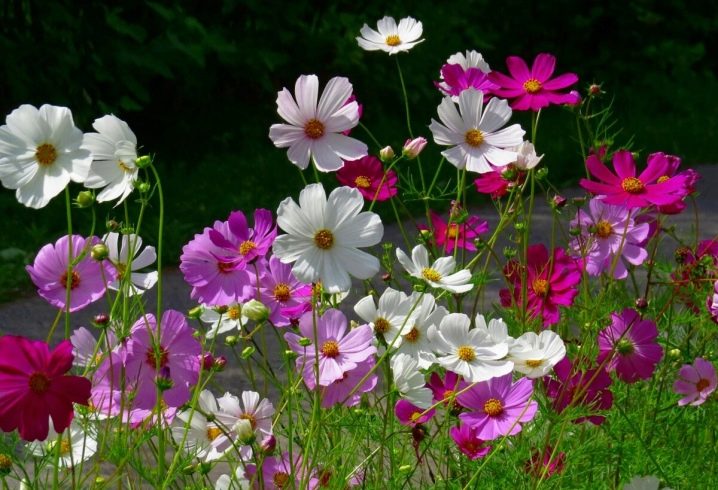
- Gerbera. People often call it a large chamomile. The difference between the flower is colorful and variegated buds, quite demanding to care for. It is recommended to grow gerberas in greenhouses or in sunny areas.

- Chrysanthemum. Another "large chamomile" that attracts gardeners with its colorful autumn bloom. When planting in the garden, you should carefully choose the variety and give preference to chrysanthemums that can grow in harsh climates.
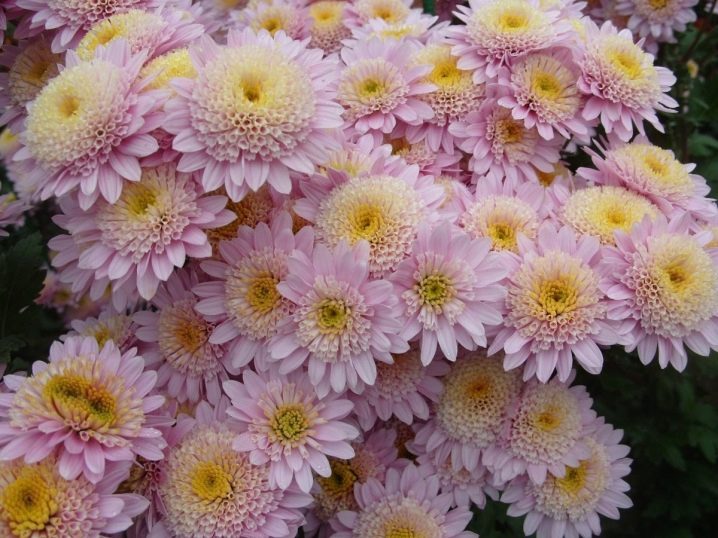
- Daisy-flowered gelichrizum. An attractive flower that resembles both a chamomile and a chrysanthemum or daisy at the same time. The plant has absorbed the best qualities, is considered a rather exotic species and is actively used in landscape design.
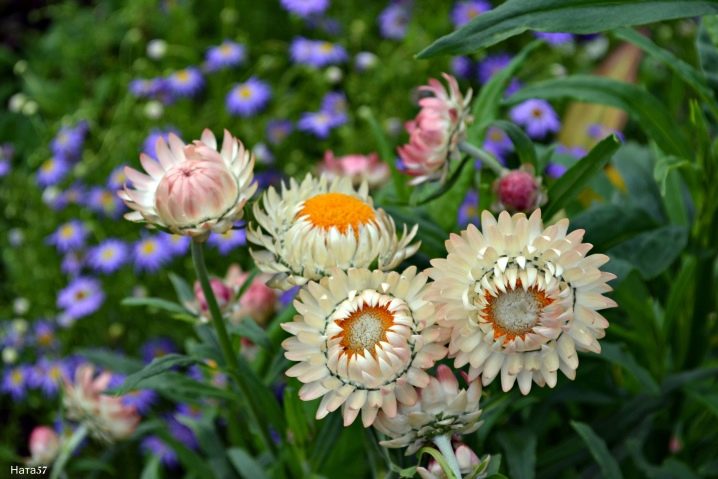
- Ursinia. The flower forms large yellow buds. There are also varieties that delight gardeners with white and purple flowers. Among the characteristics it is worth highlighting the dark green leaves, which grow up to 60 cm in length, and a strong root system.
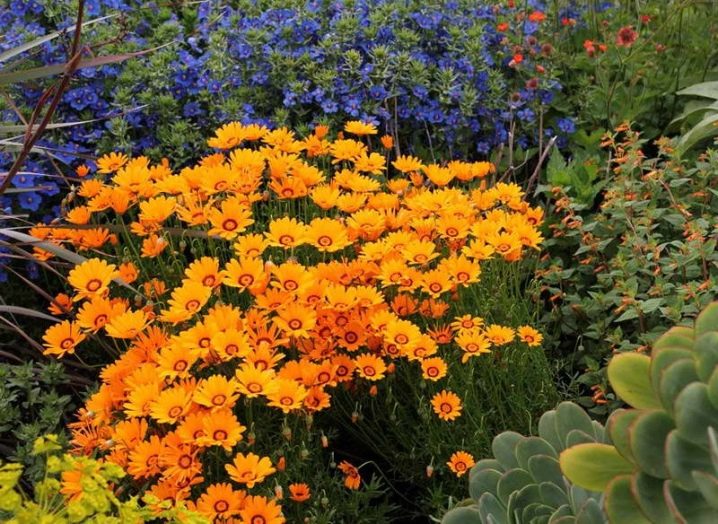
- Gatsania. A low-growing plant native to Africa, it is a unique "chamomile" with a bright color of buds. Gardeners are attracted by the view with multi-colored petals and large inflorescences, the diameter of which exceeds 10 cm.
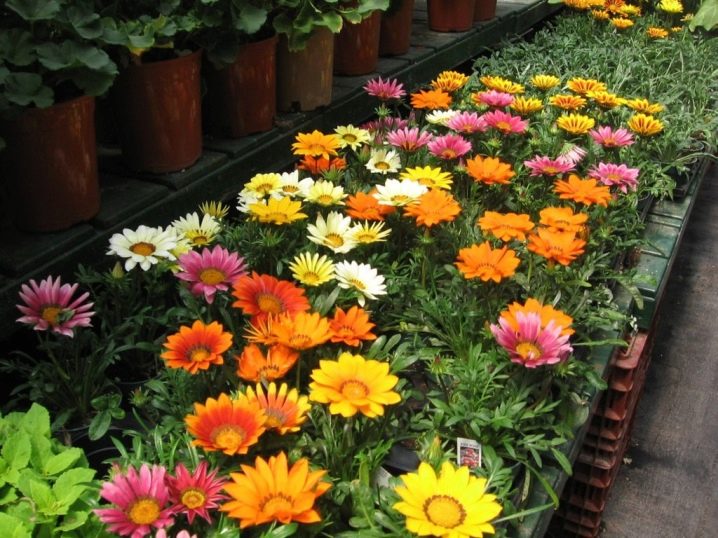
- Osteospermum. Another representative from Africa that looks like a daisy. A key advantage of the culture is its lush bloom, which is why the flower can often be found in the garden.
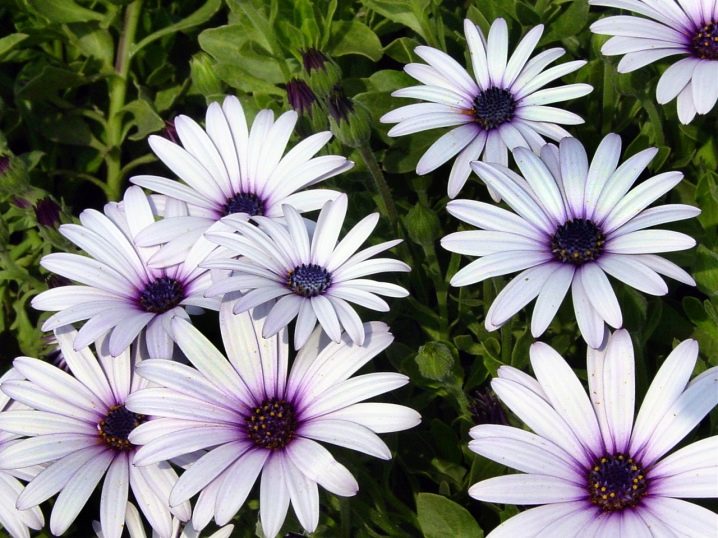
- Doronicum. The simple name is yellow chamomile. The culture is often used to decorate alpine slides or rockeries. The peculiarity of the species lies in the bright buds. In height, the doronicum rises by 10-80 cm.
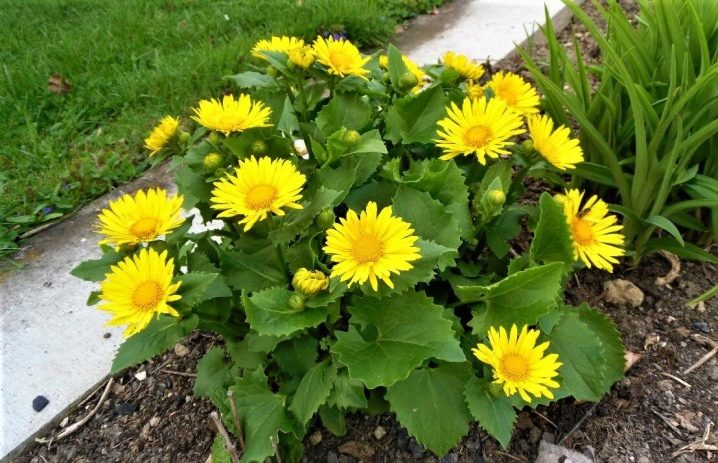
- Erigeron. A neat perennial plant up to 40 cm high, which looks great in group compositions. The maximum diameter of the inflorescence is 5 cm, which makes the species quite compact. The petals of erigeron flowers are thin and rounded.

- Cineraria. A bright flower that can attract attention with its variegated petals. The view looks especially good in group plantings, which makes it in demand among landscape designers. The homeland of cineraria is the Canary Islands.
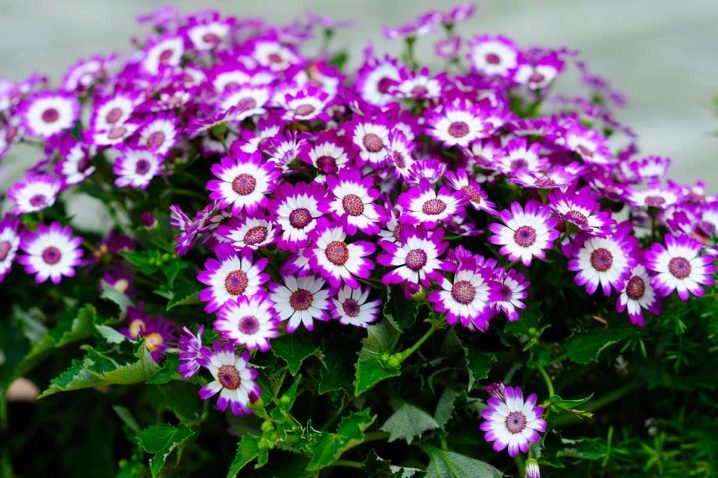
- Arctotis. An unusual flower that combines the external signs of chamomile and gerbera. In addition to white buds, the plant is also capable of forming purple, pink, and even orange petals, depending on the cultivar chosen.

- Coreopsis. The uniqueness of the flower is in its bright petals, which over time acquire a rich shade. The plant has compact bushes, the height does not exceed 30 cm. Rare varieties can grow up to a meter, and such flowers are used in single plantings.
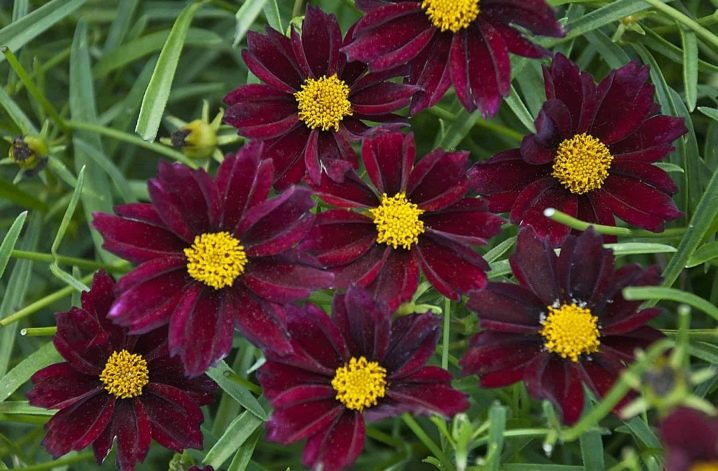
- Jerusalem artichoke. A popular plant that attracts attention with a large root system and decorative flowering. Lemon inflorescences open closer to August and delight gardeners for 1-2 months.
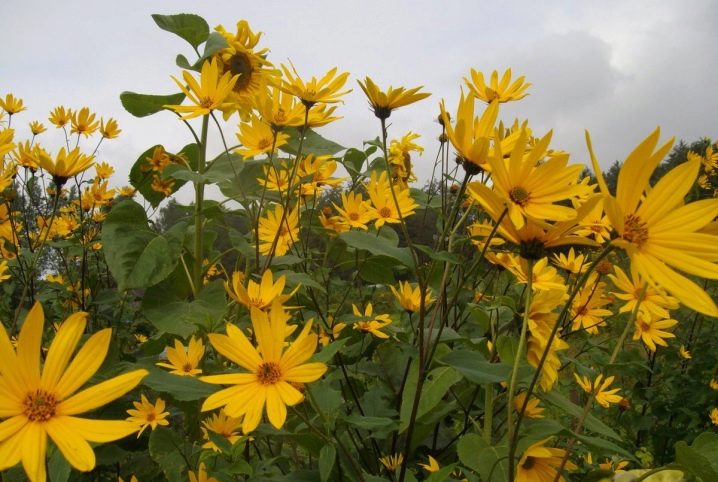
- Rudbeckia. An exotic species, famous for elongated inflorescences. The plant forms orange or brownish flowers, the maximum height of the bush reaches 2 meters. The buds begin to open only by August.
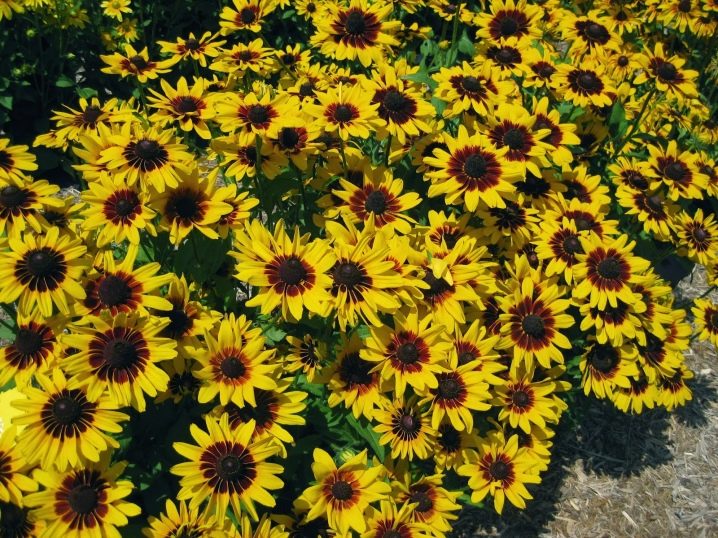
- Pyrethrum. Very much like a chamomile. The main similarity lies in the structure of the inflorescences, which acquire a saucer or sun-shaped shape. Breeders managed to breed many varieties and achieve differences in the form of shades of buds.
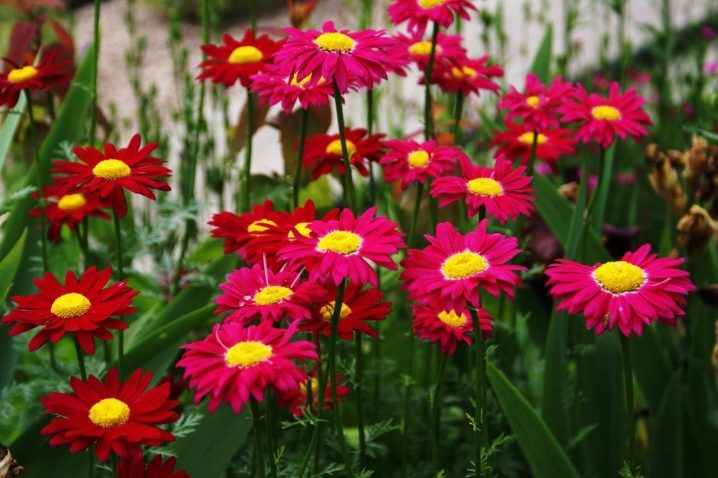
Small flowers are highly valued among gardeners for their unique structure, ease of maintenance and attractive buds.
Examples in landscape design
Small daisies are used mainly in group plantings. So, with their help, you can decorate a vacation spot by planting perennials next to flowers of more variegated shades. The key advantage of chamomile is that white perfectly dilutes bright combinations, balancing the composition.
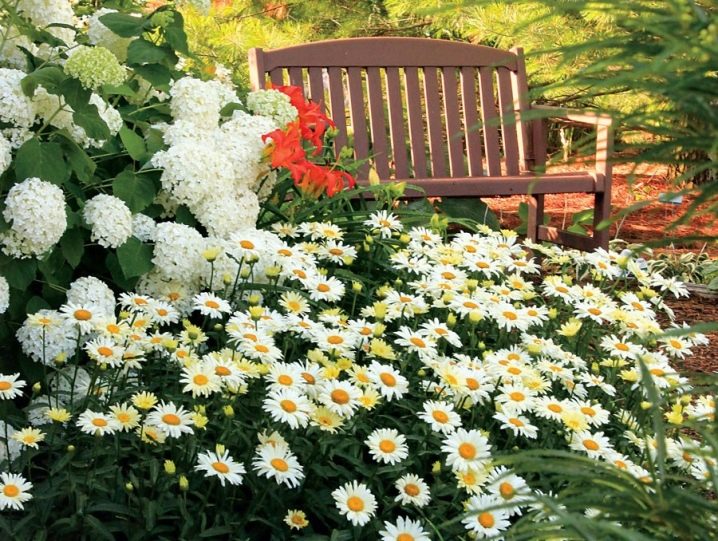
Another example that proves the need for planting daisies is a decorated path to the house. Purple, pink and white shades give a unique combination.
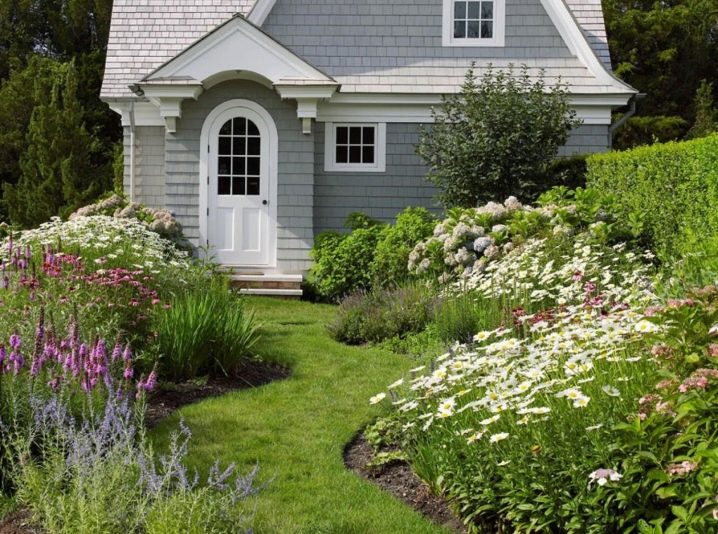
Chamomile is also found in single plantings. For example, the third image shows an interesting composition that will fit perfectly into the garden landscape and make the site more attractive.
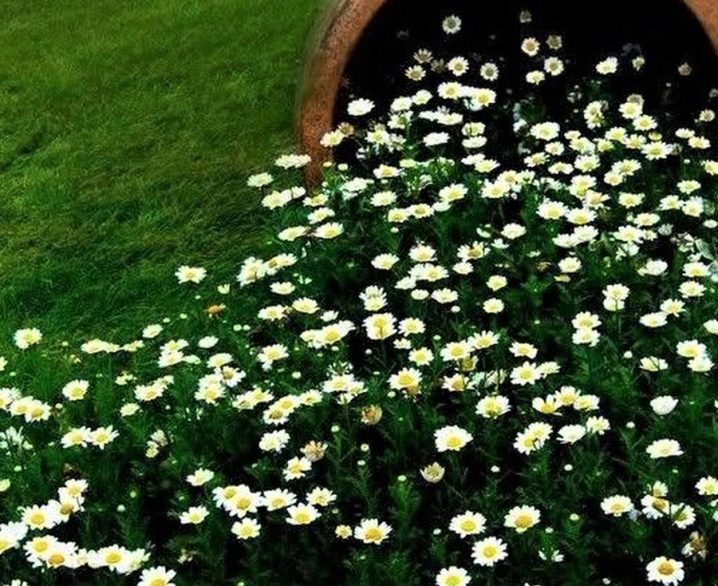







































































































The comment was sent successfully.